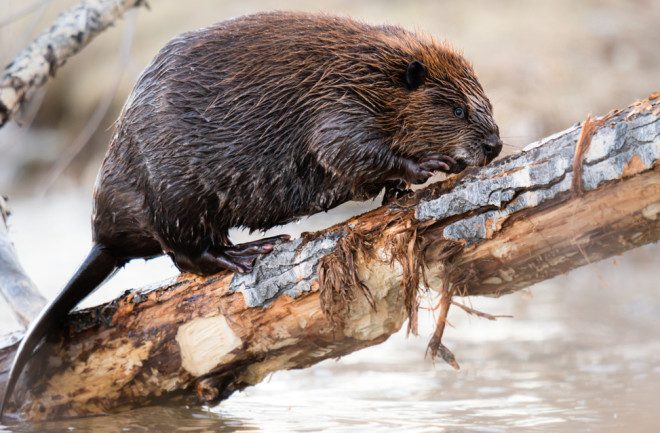Beavers are nature’s architects. Active molders of the environment, they cut down trees and modify woodlands, building dams that transform rivers and valleys into rich wetlands. And while these large rodents have long been known to be sources of food and furs to humans, a new study asks: how could beavers’ role as landscape shapers actually shape their relationship with humans?
How Did Beavers Impact Their Ancient Environment?
Examining 116 archaeological sites across Northern Europe, the researchers traced patterns of abundance of Eurasian beavers (Castor fiber), as well as other mammals and fish, as far back as 9,000 years ago, to the Mesolithic. And by tracing these patterns, they found that beaver-modified landscapes created more opportunities for humans to forage and obtain food.
In creating wetlands, beavers increased numbers of freshwater fish, like pike (Esox lucius), and mammal diversity in the area. This makes it likely that beavers facilitated human settlement in these areas, the researchers argue. As glaciers retreated at the end of the last Ice Age, humans may have depended on beavers to construct environments they could then move into and exploit, according to the study.
Read More: Ice Ages: What Causes the Earth to Freeze Over Every Few Million Years?
Were Beavers Important to Ancient Humans?
But such exploitation wasn’t an extractive, one-way street, the data suggests. While later European settlers in the 19th century managed to drive beavers to the brink of extinction in only a few centuries, beaver remains at some of these archaeological sites persisted for over 5,000 years. Such long-term beaver-human relationships suggest the human and nonhuman animals had learned to co-exist.
And there is evidence, the team contends, that these early people recognized the vital role of the beaver and treated them as socially significant. The presence of tools and jewelry carved from beaver teeth and jaws, the researchers claim, is evidence that beavers were important to humans.
Attention to how beavers “inspired human behavior and culture,” reveals how humans “respected beavers as neighbors,” says Shumon Hussain, researcher at the University of Cologne and lead author on the study.
Read More: These 5 Giant Animals Walked Alongside Ancient Humans
How Beaver Research Is Shifting
The shift in how researchers are investigating beavers at these sites is subtle but significant. Changing questions from a human-centered focus to an animal-centered perspective makes room to contemplate the ecosystem as a network of interdependent relationships that extend far beyond predator-prey dynamics. Removing the spotlight from humans creates space to ask how these engineers might have shaped our ancestors, too.
The study is part of a larger “animal turn” in science, and an effort to create a “multispecies” perspective of the past that explores humans’ coexistence with others. By gnawing away at the old view that nonhuman animals simply serve as food, such work can counter anthropogenic views of the past.
It’s a “fascinating study,” says Suzanne Birch professor of anthropology and geography at the University of Georgia, who was not involved in the study. This research “brings into clear relief the intensity of the relationship between people and beavers over thousands of years.”
Read More: 5 Ancient Animals That Stood The Test Of Time
What Do Beavers Do To Help the Environment?
Today, beaver-human relationships are strained at best. As conservationists increasingly recognize beavers as crucial to maintaining healthy wetlands, rewilding programs are eagerly reintroducing the web-footed architects to their old habitats. But not everyone is thrilled; beavers’ capacity for disrupting human-modified landscapes means they are sometimes viewed as pests capable of vast damage to rivers and human infrastructure.
But this study reminds us that negotiations between humans and beavers living together on the landscape are not new and that productive, long-term relationships can exist — indeed they once did.
Read More: 5 Animals Who Are Impressive Architects

